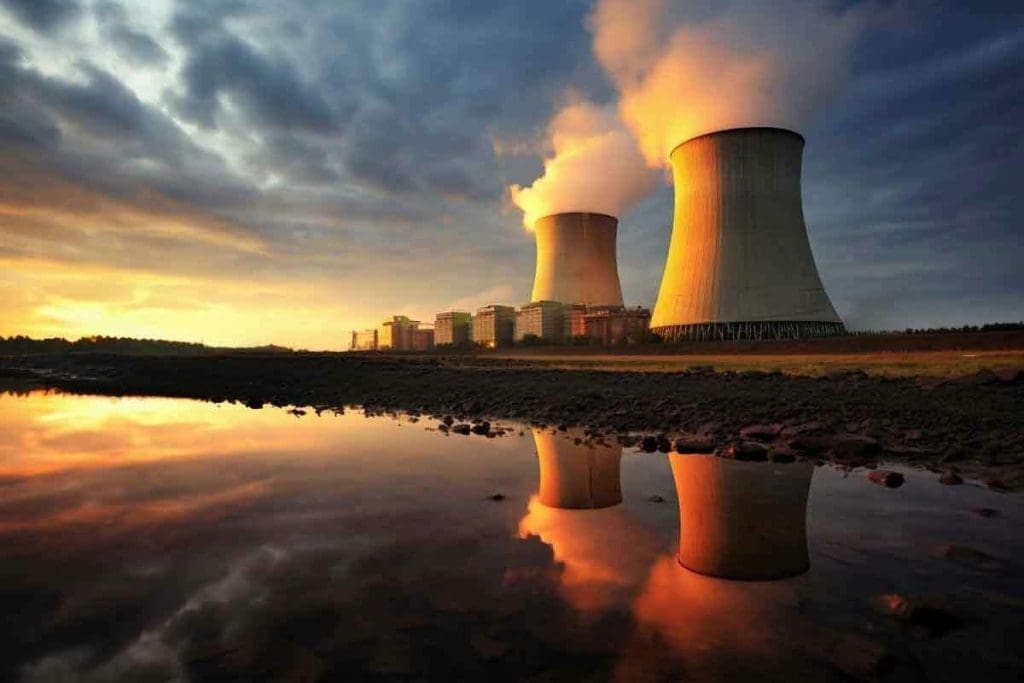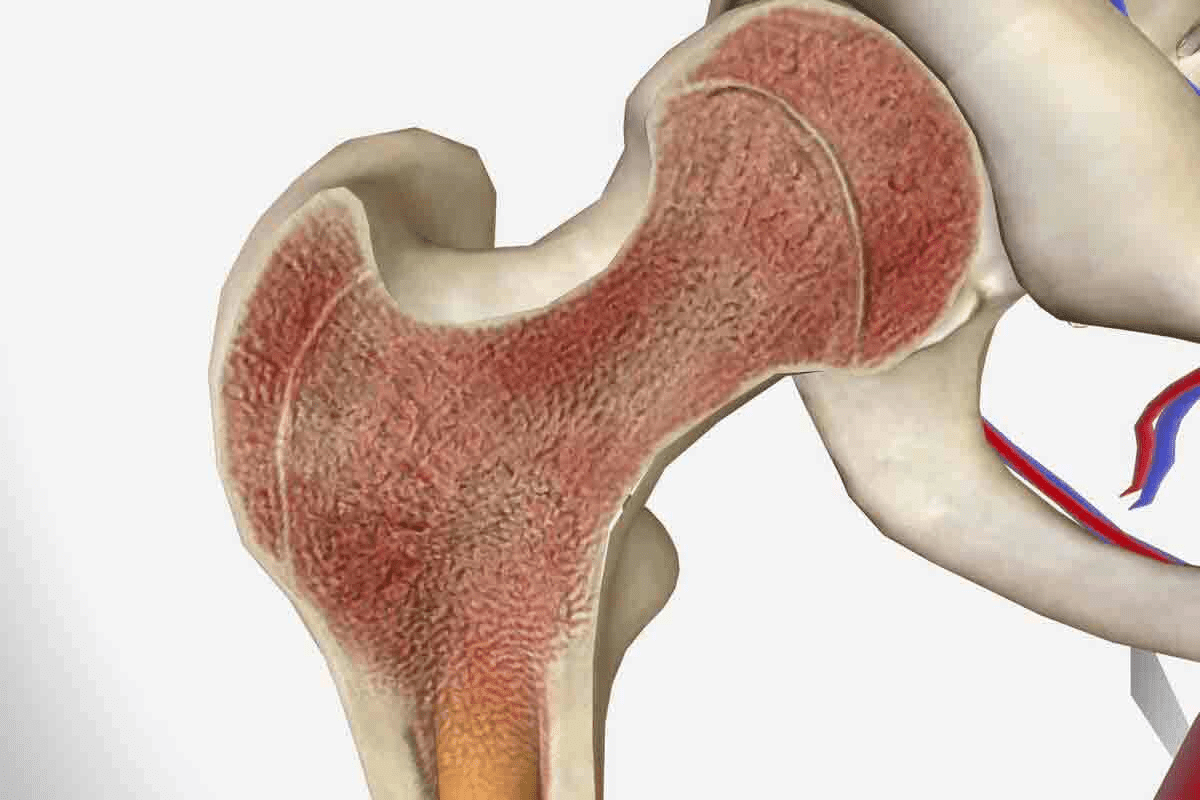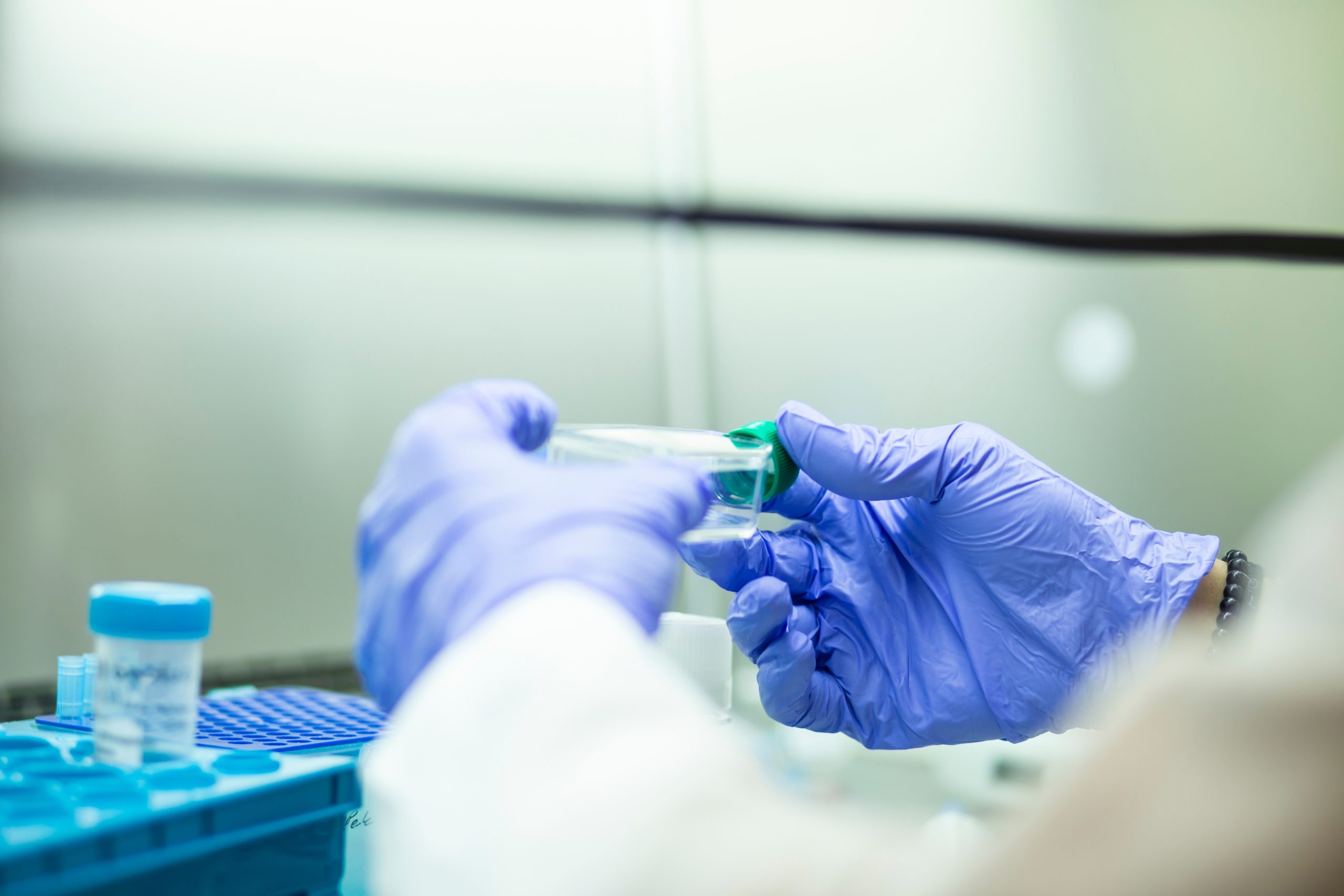Last Updated on November 27, 2025 by Bilal Hasdemir

Nuclear energy plays a vital role in our daily lives. It goes beyond just making electricity. At Liv Hospital, we see how important it is for many things, like medical treatments and industrial uses.See examples of nuclear energy in everyday life and learn how nuclear technology is used in homes, medicine, and industry.
Beyond power plants, nuclear tech has many surprising uses that affect us every day. For example, radioisotopes help in medical treatments. Also, nuclear power is used to heat up many industrial processes.
We will look at five different applications of nuclear energy. These include home safety devices, medical treatments, food preservation, nuclear-powered vessels, and advanced farming methods. These innovative uses show how versatile and important nuclear technology is.
Key Takeaways
- Nuclear energy supports various aspects of modern life beyond electricity generation.
- Radioisotopes are used in medical treatments and industrial applications.
- Nuclear power process heat is utilized in various industrial processes.
- Nuclear technology has numerous surprising uses in daily life.
- Innovative applications of nuclear energy include home safety devices and advanced agricultural practices.
The Hidden Presence of Nuclear Energy in Our Daily Lives

Nuclear energy plays a big role in our daily lives, more than we might think. It’s not just about making electricity. Its uses are wide and varied.
Beyond Power Plants: Nuclear Energy’s Wider Applications
Nuclear technology supports our society in many ways. It’s used in products we use every day, like food and medicine. It helps us live better lives, from treating illnesses to growing food.
How Nuclear Technology Quietly Supports Modern Society
Nuclear energy helps our society in many quiet but important ways. It’s used in scientific research to study the world around us. It also helps keep food safe by reducing waste.
Seeing how nuclear energy is used in different industries shows its value. By using it wisely, we can enjoy its benefits in many areas of our lives.
Understanding the Basics: How Nuclear Energy Works

Nuclear energy is all about the atomic world. It’s where reactions and radiation shape our world. We’ll look at the science behind it, how it goes from atoms to use, and the types of radiation and their uses.
The Science Behind Nuclear Reactions
Nuclear energy comes from the heart of an atom, where protons and neutrons live. The discovery of nuclear fission in the early 20th century showed us how to split an atom’s nucleus. This releases a lot of energy, which we use in power plants to make electricity.
Nuclear fission is when we split atomic nuclei, like uranium-235 or plutonium-239. When a neutron hits one of these atoms, it starts a chain reaction. This reaction releases more neutrons and a lot of energy.
From Atoms to Applications: The Journey of Nuclear Energy
The journey of nuclear energy is amazing. It starts with mining uranium, then processing and enriching it for reactors. The energy from fission makes steam, which turns turbines to make electricity.
- Nuclear power plants are a big source of electricity worldwide.
- Nuclear energy helps in medicine, like treating cancer and imaging.
- It’s also used in industry, like sterilizing medical tools and food.
Types of Radiation and Their Practical Uses
Radiation is key in nuclear energy, with types like alpha, beta, and gamma. Each has its own uses.
Gamma radiation is used in medicine, like in cancer treatments. It’s also used in industry for sterilizing equipment and food.
“The discovery of X-rays by Wilhelm Rontgen in 1895 marked the beginning of a new era in medical imaging and radiation science.”
Knowing about different radiation types and their uses is important. It helps us use nuclear energy safely and effectively.
Home Safety: Smoke Detectors and Nuclear Technology
In our homes, nuclear technology helps keep us safe. It does this through smoke detectors with a bit of radioactive material. These detectors are key to home safety, alerting us early if there’s a fire.
The Role of Americium-241 in Protecting Your Home
Smoke detectors have a small amount of Americium-241. This is a radioactive isotope from nuclear reactors. It helps the detectors work by ionizing the air, making it conduct electricity.
When smoke gets in, it messes with this process. This triggers the alarm, warning us of danger.
How Ionization Smoke Detectors Save Lives
Ionization smoke detectors are great at catching the tiny particles from fast fires. Thanks to Americium-241, they’re super sensitive. This means they can warn us early, helping us get out safely.
The use of Americium-241 in smoke detectors shows how nuclear tech helps us every day. Even though it’s radioactive, these detectors are safe when used correctly.
The Safety Record of Nuclear Materials in Consumer Products
The safety of nuclear materials in products like smoke detectors is top-notch. The Americium-241 in them is tiny and safely sealed. This prevents any radioactive material from getting out.
Regulators worldwide have strict rules to make sure these products are safe for us. The benefits of nuclear tech in smoke detectors far outshine any risks. As we learn more about examples of nuclear energy in daily life, it’s clear nuclear tech is key to our safety and well-being.
Nuclear Medicine: Diagnosing and Treating Diseases
Nuclear medicine is a powerful tool in the fight against diseases. It uses radioactive tracers and advanced imaging to diagnose and treat conditions. This method targets specific areas in the body.
Radiotherapy: Fighting Cancer with Targeted Radiation
Radiotherapy is a key use of nuclear medicine. It uses radioactive materials to destroy or slow cancer cells. Technetium-99m, a common radioisotope, is used in many diagnostic procedures.
We use radiotherapy to treat cancer by focusing radiation on tumors. This reduces damage to healthy tissues nearby. The precision of radiotherapy has greatly improved cancer treatment results.
By using radioactive isotopes, we can create personalized treatment plans. This makes therapy more effective for each patient.
Diagnostic Imaging: Seeing Inside the Body
Nuclear medicine also helps in diagnostic imaging. It lets doctors see inside the body. Techniques like Positron Emission Tomography (PET) and Single Photon Emission Computed Tomography (SPECT) use small amounts of radioactive tracers.
These methods help diagnose many conditions, including cancer and neurological disorders. They provide detailed images of the body’s internal processes. This helps in early detection and treatment planning.
The Global Impact: 10,000+ Hospitals Using Nuclear Medicine Daily
Nuclear medicine’s impact is felt worldwide. Over 10,000 hospitals use it every day. Its widespread use has changed healthcare, making diagnoses and treatments more accurate.
| Application | Description | Benefit |
| Radiotherapy | Targeted radiation therapy for cancer treatment | Precise treatment with minimal damage to healthy tissues |
| Diagnostic Imaging | PET and SPECT scans for visualizing internal body structures | Early detection and diagnosis of various medical conditions |
| Global Usage | Over 10,000 hospitals worldwide use nuclear medicine | Improved healthcare outcomes through advanced diagnostic and therapeutic techniques |
Nuclear medicine is constantly evolving. Ongoing research aims to expand its uses and improve patient care. As we continue to use nuclear reactions for medical purposes, we’ll see more innovative solutions against disease.
Food Preservation: Extending Shelf Life Through Irradiation
Food irradiation uses nuclear energy to keep food fresh and safe. It kills bacteria and pests by exposing food to ionizing radiation. This makes food last longer and safer to eat.
How Nuclear Irradiation Keeps Food Fresh
Nuclear irradiation kills harmful organisms in food. This stops spoilage and foodborne illnesses. Here’s how it works:
- Food is exposed to ionizing radiation.
- Bacteria, viruses, and pests are killed.
- Food stays fresh longer.
This method is great for foods like spices, meats, and fruits. It keeps them fresh and safe to eat.
Addressing Food Security: Preserving 30% of Harvested Food in Hot Climates
In hot climates, a lot of food spoils. Food irradiation helps by:
- Lowering post-harvest losses.
- Boosting food security.
- Making more nutritious food available.
It helps keep more food safe, which is key in areas where food is scarce.
Safety and Regulations in Food Irradiation
Food irradiation is safe thanks to strict rules. Over 60 countries allow it, with rules on:
- What foods can be irradiated?
- The radiation doses.
- How foods must be labeled.
These rules make sure food irradiation is done right. This gives us safe and healthy food.
Examples of Nuclear Energy in Everyday Life: Transportation and Power
Nuclear energy powers naval vessels, like submarines and aircraft carriers. It offers a long-lasting, clean energy source. This is key for both military and civilian use, beating traditional fossil fuels.
Nuclear-Powered Vessels: Submarines and Ships
Nuclear submarines and ships are a top example of nuclear energy in transport. They run on nuclear reactors, giving them the power to move. This means they can stay at sea for years without needing to refuel.
The benefits of these vessels include:
- Long-duration power: Nuclear reactors can run for years without needing fuel.
- Emission-free: Nuclear power doesn’t release greenhouse gases.
- High energy density: Nuclear reactors pack a lot of energy in a small space.
The Advantages of Long-Duration, Emission-Free Power
Nuclear reactors offer long-lasting, clean power for naval vessels. This lets them stay at sea for long times without needing to surface or refuel. This is a big plus for their work.
As we look into nuclear technology, it’s clear that it’s used in many ways. From powering homes to moving ships, nuclear power is key.
Military and Civilian Applications of Nuclear Propulsion
Nuclear propulsion isn’t just for military ships. It’s also used in civilian vessels, like icebreakers. These ships help with trade and research in the Arctic. Nuclear power lets them work in tough conditions for a long time.
Using nuclear power has many benefits. It boosts how well ships can work, cuts down on environmental harm, and makes energy more secure. As we keep looking into nuclear energy, it’s clear that it has a big role in our daily lives.
Agricultural Advancements Through Nuclear Technology
Nuclear science is key to modernizing farming. It boosts crop yields, ensures food security, and supports green farming.
Pest Control Using Radiation Techniques
Nuclear tech helps control pests with radiation. The Sterile Insect Technique (SIT) sterilizes male insects with radiation. They then mate with females, stopping the pest cycle.
In Africa, SIT fights the tsetse fly, which spreads disease. It boosts animal health and farm productivity.
Crop Improvement Through Mutation Breeding
Nuclear tech also improves crops through mutation breeding. Seeds are exposed to radiation to create new traits. These can include better yields or disease resistance.
For example, new rice and wheat varieties have been made. They grow more and resist diseases better. Farmers around the world use these, helping feed everyone.
| Crop | Trait Improved | Method |
| Rice | Disease Resistance | Mutation Breeding |
| Wheat | Yield Increase | Mutation Breeding |
| Barley | Drought Tolerance | Mutation Breeding |
Sustainable Farming Practices Powered by Nuclear Science
Nuclear science helps farmers use fertilizers and water better. Isotope techniques check how well crops use fertilizers. This means less waste and is better for the environment.
It also helps keep soil healthy and prevent erosion. This is good for the land and future farming.
By using nuclear tech, we can make farming better. This ensures food for everyone now and in the future.
The Benefits and Concerns of Nuclear Applications
Nuclear energy has many uses, but it also has its downsides. We need to look at both sides carefully. This helps us understand its good points and challenges.
Weighing the Advantages: Efficiency, Reliability, and Low Emissions
Nuclear energy has big pluses like efficiency, reliability, and low emissions. For example, nuclear plants give us steady electricity without polluting. This is great for countries wanting to cut down on carbon emissions.
Nuclear tech also helps in many other ways. It’s changed medicine, helping diagnose and treat diseases. It’s also used in food preservation and farming, helping keep food safe and sustainable.
Addressing Safety Concerns and Public Perception
But nuclear energy also has big safety concerns and can sway public opinion. Accidents, though rare, can be very bad. Keeping nuclear plants safe and dealing with waste is key to avoiding these risks.
People worry about nuclear tech’s risks. But if we explain how safe it is and its benefits, we can win their trust.
The Future of Nuclear Applications in Consumer Products
The future of nuclear tech in everyday items looks bright. Scientists are working hard to make it safer and better. New medicines and products could come from this research.
We must keep working on the issues with nuclear tech while enjoying its benefits. This way, nuclear energy can make our lives and the planet better.
Conclusion: The Evolving Role of Nuclear Energy in Society
Nuclear energy is key in many parts of our lives, from making electricity to helping in medicine and food. The examples of nuclear energy in daily life show how versatile it is. It keeps growing, showing its wide range of uses.
Nuclear energy does more than just power plants. It also helps in many other ways, like in smoke detectors, medical tests, and food that’s been treated with it. These uses show what nuclear power can do beyond just making electricity. They help make our world safer, healthier, and more sustainable.
Nuclear technology helps us in many ways, from better medical care to better farming. As we look to the future, nuclear energy’s role will likely grow. It might help in new areas like advanced space travel and cutting-edge medical treatments.
In summary, nuclear energy is a big part of our energy mix, with uses far beyond just electricity. As we use it more, we must face its challenges. This way, nuclear energy can keep helping society in good ways.
FAQ
What are 5 examples of nuclear energy?
Nuclear energy is used in many ways. It powers electricity, helps in medicine, and preserves food. It’s also found in smoke detectors and nuclear vessels.
How is nuclear energy used in everyday life?
Nuclear energy is all around us. It’s in smoke detectors, medical treatments, and food preservation. It also powers submarines and ships.
What is one real-world example related to nuclear energy?
Americium-241 in smoke detectors is a great example. It helps keep homes safe and saves lives.
What are some examples of nuclear power?
Nuclear power is used in many ways. It generates electricity, powers submarines and ships, and is used in research and medicine.
How do we use nuclear energy in our everyday lives?
We use nuclear energy in many ways. It’s in medical treatments, food preservation, and even in smoke detectors.
What can nuclear power be used for?
Nuclear power has many uses. It generates electricity, powers submarines and ships, and supports medical treatments and food preservation.
What are the uses of atomic power?
Atomic power, or nuclear energy, is used for many things. It generates electricity, supports medical treatments, and has industrial uses.
Can you give examples of nuclear energy in daily life?
Yes, nuclear energy is in smoke detectors, medical treatments, and food irradiation. It extends food shelf life.
How can we use nuclear energy?
We can use nuclear energy in many ways. It generates electricity, supports medical treatments, preserves food, and powers submarines and ships.
What can nuclear power do?
Nuclear power can do a lot. It generates electricity, powers submarines and ships, supports medical treatments, and has industrial uses.
References
- National Institute of Biomedical Imaging and Bioengineering. (2020, August 31). Nuclear Medicine. https://www.nibib.nih.gov/science-education/science-topics/nuclear-medicine






